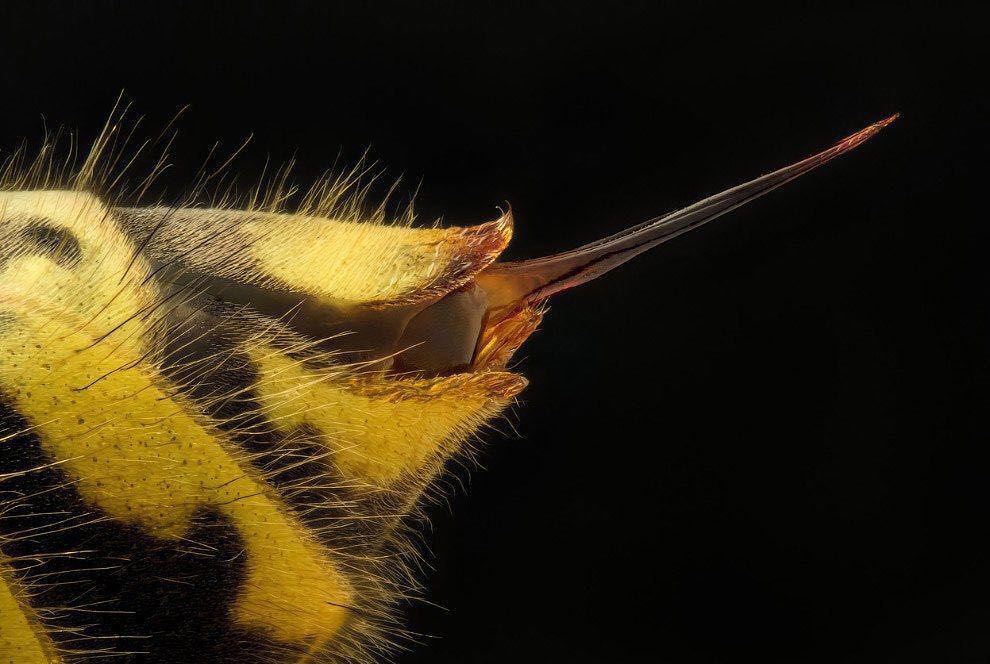A bee sting is painful for humans and can cause an allergic reaction. But for the insect itself, the sting is fatal – once the bee stings, it dies. The causes of death are due to the physiology of insects and there is little to no avoidance of death. Bees die after a sting – why does this happen?
Why does a bee die after a sting?
It’s all about the fact that the sting of bees is jagged, and the jagged parts are arranged in such a way that it is impossible to pull the spike out of the body of the stung creature. After a bee has been stung, it tries to fly away, leaving the sting at the sting site. The sting gets stuck and breaks off, and the pouch of bee venom attached to the sting continues to contract and release the poison into the body of the sting.
Families of bees consist of thousands of insects and the death of one individual does not damage the functionality of the entire family. Working bees are not valuable specimens, so nature has no mechanism for preserving their lives. On the other hand, wasps and bumblebees, whose families are much smaller in number, do not die after a sting. By stinging, such insects keep alive.
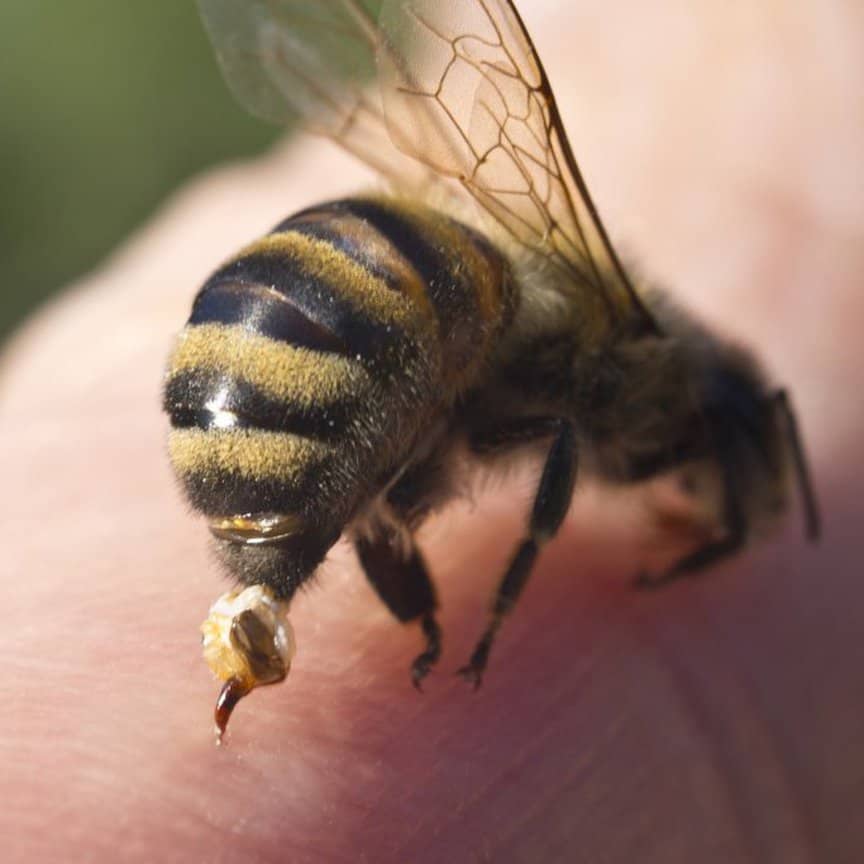
How long does a bee live after it stings?
Long life after the loss of the sting and part of the digestive tract is impossible, so after the sting, the bee dies very quickly. The life expectancy of a bee is a few months. But the queen lives for several years, without risking her own life, because she almost never stings people – she can only attack competitors.
Does the bee die after the sting or can survive?
In what situations can a honey bee survive after stinging? This is possible if the stinger was a creature with thin skin, which will break through when the insect tries to pull the stinger out. Human skin is too dense for this, so if a bee stung a human, its demise is predetermined.
Bees sting only as a defensive reaction. They don’t attack their own – only when they feel threatened. And other insects, small birds, and rodents can also be a source of threat to the little toilers. In some situations, bees manage to get away from the victim with minimal losses and survive. Does the bee die after a sting necessarily? No, the insect can survive, but it is rare.
A bee sting is dangerous to the insects themselves, but almost always harmless to humans. But sometimes bee venom causes an allergic response in the body and can cause anaphylactic shock. But more often the allergy is manifested by inflammation and swelling in the sting area, rarely – a rise in body temperature. After some time, traces of the sting disappeared.
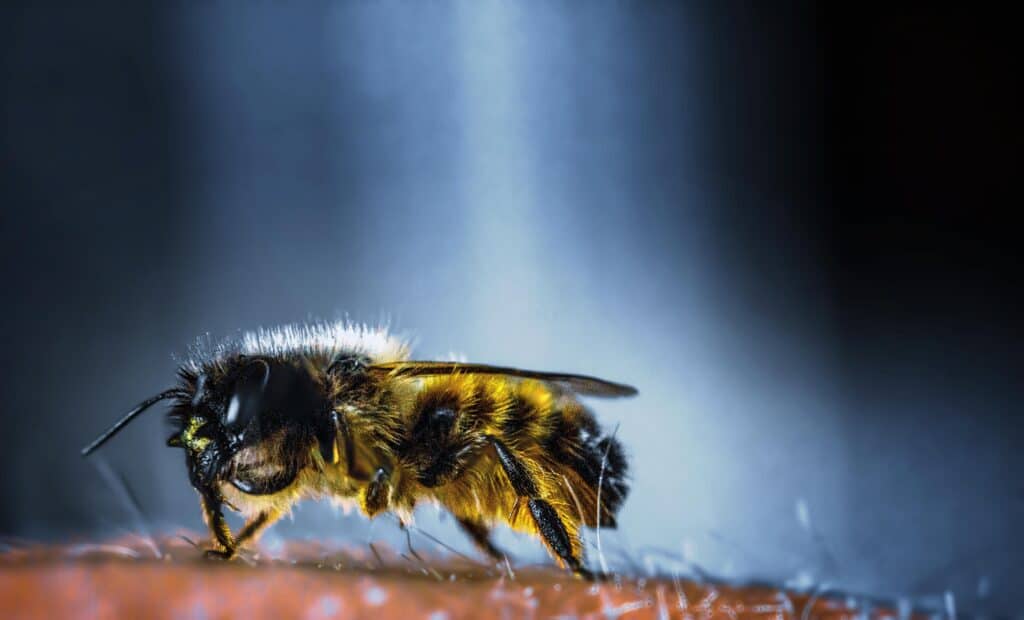
How big is a bee stinger?
The sting of a bee is an organ ranging in size from 2 to 4.5 mm, which it inserts into the body of its offender, injecting the venom, which has a painful effect and stinging. Interestingly, the venom in the stinger continues to be released even after the bite.
What happens if a bee stinger is not removed?
Examine the bite site and if there is a sting left, it must be pulled out. It is advisable to work with tweezers to avoid infection. You should not try to squeeze the sting out with your fingers, as there may still be venom in the stinger that will also get into the wound and worsen the condition of the victim.
If the stinger is not taken out, the stung area will be painful and inflamed, and itching and fever may occur.
How much does a bee sting hurt?
After the sting, the person immediately feels a sharp burning pain, which is comparable to the pain of a burn. In the center of the wound will be a visible sting, around which redness and swelling of the skin immediately begin. All this happens because of the bee venom that entered the skin through the sting. If the victim has no allergies, then, except for redness and discomfort, nothing bad happens. However, if the person is prone to allergic reactions, then swelling can begin, and then require medical attention. It is dangerous if the bite is on the tongue or lip because they are very swollen and painful. Multiple bites are also dangerous, especially on the face. In addition to the fact that it will not have the best appearance, it can also begin choking. In this case, it is necessary to see a doctor immediately.
Why bees die after a sting?
When it comes to a human or other large creature sting, the bee will die. Do bees know they die when they sting? So why do insects take such risks and sting opponents that clearly bring them death?
It is important to understand that for bees, the sting is not an act of self-sacrifice. It is a natural defensive reaction to a threat (or a situation that the bee perceives as such).
Bees by nature are not fans of attacking. They are true toilers whose main purpose in life is to gather and stockpile food and breed. They do not bite on a whim or for no reason. A sting is an extreme measure, applied only in the name of self-defense.
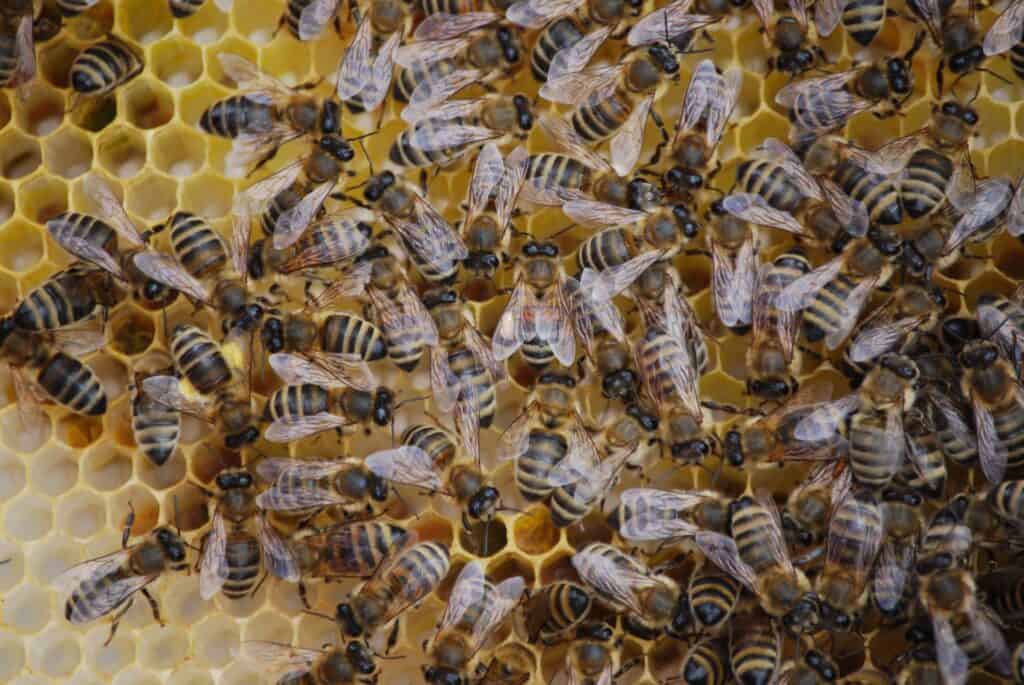
Do bees sting for no reason?
No, bees attack only if they feel threatened. The reason for defensive aggression may be:
- unpleasant smells to the insects, including alcohol and caffeine, cigarettes, smoke, sweat, toilet water, and other strong odors;
- sudden movements and fidgety behavior, dark clothing, hair flapping in the wind;
- a bad “mood,” which can be caused by a change in the weather or other external factors.
If you were stung by a bee – try as quickly as possible to leave the scene. The smell of venom will attract other bees and cause their aggression, resulting in a significant increase in the number of stings and dead bees.
Bees always die when they sting a human
A bee sting is deadly to it and unpleasant to humans. Try to avoid situations that may provoke a bee attack – this way you will avoid pain and risk of allergies and prevent the death of the insect. Do not go out to the apiary during periods of high bee activity, choose the hours before bees fly out or before sunset to pick honey and inspect the hives. Before you go to the apiary, take a shower and change your clothes. You should not have any traces of perfume, sweat, or chemicals on you. Also, you should not communicate with insects after the feast – they definitely do not like the smell of booze. Choose light-colored clothing and cover your hair with a headdress to communicate with bees.
Remember, if a bee stings, it dies. Avoiding stings will keep the honey worker alive.
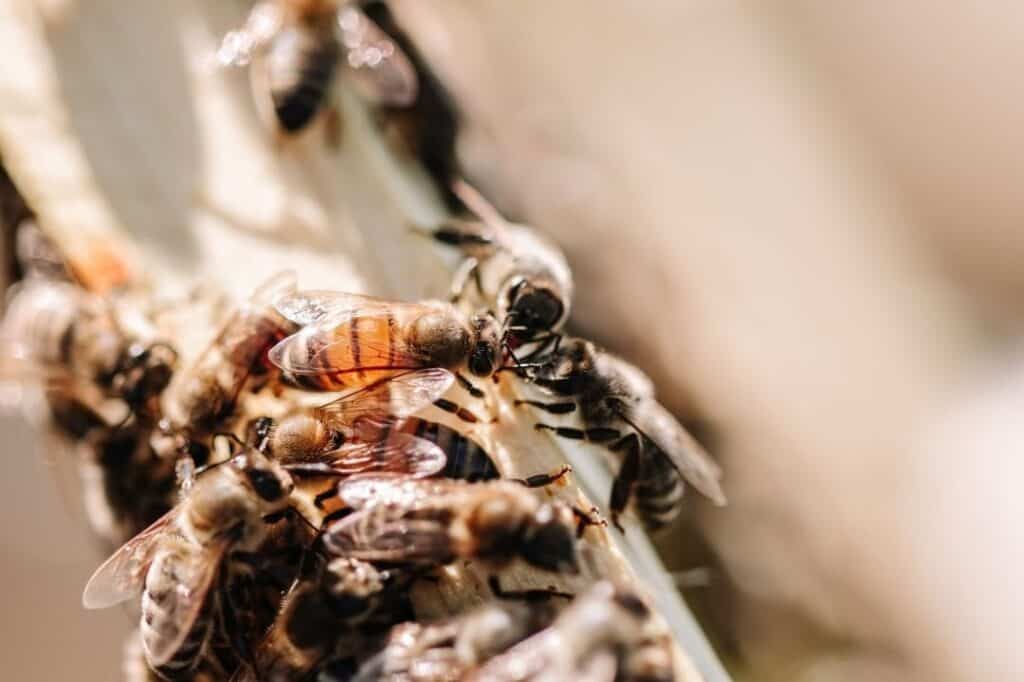
FAQ
How many times can a bee sting?
A normal bee can only sting you once, and after that, it dies.
Do queen bees have a stinger?
The queen bee has a sting. The sting is longer than a normal bee’s and smoother. Regular bees have 9 to 10 serrations on the sting, but the queen has only 4. The string is used when fighting other queens.
How many times can a queen bee sting?
A queen sting is smoother than a normal bee. Therefore, she can sting you several times and survive.
Can a dead bee sting you?
There is still venom in the sting, even after the bee is dead. For example, if you step on a bee with your bare foot and the stinger stings your skin, the effects of the sting are typical. You will experience itching and swelling of the puncture site.
Why don’t bees sting beekeepers?
Beekeepers know the rules for handling bees, wear a bee suit, and use a smokehouse for bees.
Why do bees die after a sting?
The sting of an ordinary bee has 9-10 serrations. The bee cannot pull it out. And when the insect tries to fly away, it tears its abdomen, leaving the sting and some of its internal organs in place. Life in such a condition is impossible. Even having managed to fly away at some distance, the bee will die.
